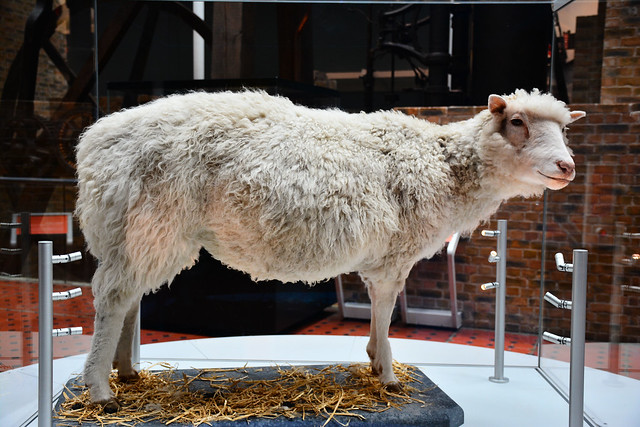By Christian Kellams, Contributing Writer

Each year, more than 100 million animals such as dogs, mice, and frogs are subjected to relentless laboratory experiments. Whether or not this is ethically justified has proven to be a rather prodigious argument among scientists all over the globe. Some people believe that animals lack the brain capacity to fully grasp the concept of pain. However, these people fail to realize that animals, similar to humans, have the ability to think, share common interests and experience agony. Scientists should refrain from conducting gratuitous experiments such as cloning animals.
Cloning is a risky process in which hundreds of the mother’s precious embryos are wasted. Each embryo, an unborn offspring in the early stages of development has the potential to become a healthy newborn, however, scientists often proceed with the experiment regardless of this detrimental loss. As the famous writer, Ferris Jabr puts it, “Often, hundreds of embryos and attempted pregnancies are needed to produce even a few clones” (“Scientificamerican.com” 2017). This demonstrates that certain individuals, aware of their acts, willingly throw away new life. In fact, current cloning techniques reveal that the odds of producing a successful clone are less than one percent. This is mainly because most scientists lack a complete understanding of the reproductive physiology of endangered animals. As a result of this, researchers often struggle to determine when animals ovulate and how to most effectively acquire their eggs. This uncertainty is the main reason most embryos die in the early stages of development.
Scientists, however, have managed to clone different breeds of animals with success. In their eyes, this accomplishment has brought science one step closer to saving all variations of endangered species. In contrast to this, one vexing problem remains: the animals which were cloned, died before reaching their average life span. As Mr. Jabr argues, “All those attempted clones of endangered or extinct animals died in different ways for different reasons, but they all shared one fundamental problem—they were not exact replicas of their counterparts” (“Scientificamerican.com” 2017). These clones were imperfect because their D.N.A. did not exactly match their mother. This is because the D.N.A. of one species was injected into the egg of a similar but different species. This alteration may be the reason why cloned animals of endangered species tend to live shortened lives. As Tim Utton from the University of Nottingham puts it, “A review of all the world’s cloned animals found clear evidence that they are at risk of a catalog of abnormalities”(“DailyMail.com” 2017). This proves that cloning is not the best option when saving an endangered species.
One argument which many scientists make in favor of cloning animals is that they are nonhuman and, therefore, expendable in any sort of scientific test. However, Professor Singer from Princeton University makes a valid argument against this viewpoint, “If we are considering a piece of scientific research that we wish to perform on nonhuman animals we can’t just say, well here is something that might just benefit humans and animals are available so let’s just get a batch of animals and test them” (“Ethical use of Biology” 2017). This powerful statement brings to light the importance which all animals have on this planet. If an experiment involves the suffering of animals then one should look to different options or methods of research. Professor singer brushes upon this insight as well, “So obviously this sets standards as to how we can use nonhuman animals. Basically, it says that we can’t use them in ways which fail to give the proper weight to the interests that they do have” (“Ethical use of Biology” 2017). When professor singer mentioned the interests of animals, he was referring to their natural behavior: grazing peacefully in warm, grassy fields. Any test or research which interferes with this basic interest should be taken out of consideration because animals have lives which can go badly if this is allowed to occur.
It is paramount that scientists terminate the use of strenuous experiments on animals. This is because the process of cloning, wastes embryos, violates the rights of animals, and rarely succeeds causing the quality of an animal’s life to decrease tremendously. While the idea of cloning may seem exciting and joyful, one must consider the many risks and wasted lives involved in the process.





